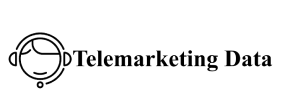In the digital age, the performance of your website can significantly impact user experience, search engine rankings, and, ultimately, conversion rates. One crucial element that often gets overlooked in web optimization is the quality and management of images. Properly edited photos not only enhance the visual appeal of your site but also improve loading speeds and overall performance. This guide will explore effective strategies for editing photos to ensure better website performance, focusing on aspects such as file formats, compression techniques, and responsive design.
Choosing the Right File Format
The first step in optimizing photos for your website is selecting the appropriate file format. The most common formats are JPEG, PNG, and GIF, each with its advantages and ideal use cases. JPEG is real estate photo editing service for photographs due to its ability to compress images significantly while maintaining acceptable quality. On the other hand, PNG is ideal for images that require transparency or sharper edges, such as logos or graphics. GIFs are primarily used for simple animations. Understanding the strengths of each format allows you to choose the best one for your specific needs, ultimately contributing to faster load times and improved website performance.
Image Compression Techniques
Once you’ve selected the right file format, the next step is to implement image compression techniques. Image compression reduces file sizes without significantly compromising quality, making it essential for web performance. There are two types of compression: lossless and lossy. Lossless compression what industries benefit most from clipping paths becomes the original quality of the image, while lossy compression reduces file size by removing some data. Tools like Adobe Photoshop, TinyPNG, and ImageOptim offer effective compression options. Striking the right balance between quality and file size is crucial; aim for a reduction of 50-70% in file size without sacrificing visual integrity. This reduction can significantly enhance loading times, leading to a better user experience.
Resizing Images for Optimal Display
Resizing images for optimal display is another critical factor in enhancing website performance. Many photographers and designers upload images at their original size, which can be excessively large for web use. Before uploading, ensure that images are resized to the search engine optimization mails necessary for your website. For instance, if a photo will be displayed at 800×600 pixels, there’s no need to upload a 3000×2000 pixel file. Using CSS or HTML to resize images can lead to slower loading times, as the browser still needs to download the full-sized image. By resizing images to their intended display dimensions, you can improve loading speeds and reduce the strain on your server.
Implementing Responsive Design
With the increasing use of mobile devices, implementing responsive design is essential for optimizing photos on your website. Responsive design ensures that images adapt to various screen sizes and resolutions, providing an optimal viewing experience across devices. Utilize CSS media queries to serve different image sizes based on the user’s screen. For example, smaller images can be delivered to mobile devices, while larger images can be presented on desktops. Additionally, consider using the HTML srcset attribute, which allows the browser to choose the most appropriate image size based on the device. This approach not only enhances user experience but also improves loading times, contributing to better website performance.
Adding Alt Text for SEO
While optimizing images for performance, it’s essential not to overlook the importance of search engine optimization (SEO). Adding descriptive alt text to your images provides context for search engines and improves accessibility for visually impaired users. Alt text helps search engines understand what the image is about, which can enhance your website’s visibility in search results. Moreover, well-crafted alt text can improve page load times, as search engines may prioritize websites that offer a better user experience. Aim for concise, relevant descriptions that include keywords naturally to maximize the benefits of alt text.
Testing and Monitoring Performance
Finally, testing and monitoring your website’s performance after editing photos is crucial for understanding the impact of your optimizations. Use tools like Google PageSpeed Insights, GTmetrix, or Pingdom to evaluate loading times and overall performance. These tools provide insights into image load times and suggest improvements. Regularly monitoring your website’s performance allows you to identify any issues that may arise and make adjustments as necessary. Keeping track of analytics can help you understand how your changes affect user behavior, leading to continuous improvements in both image quality and website performance.

